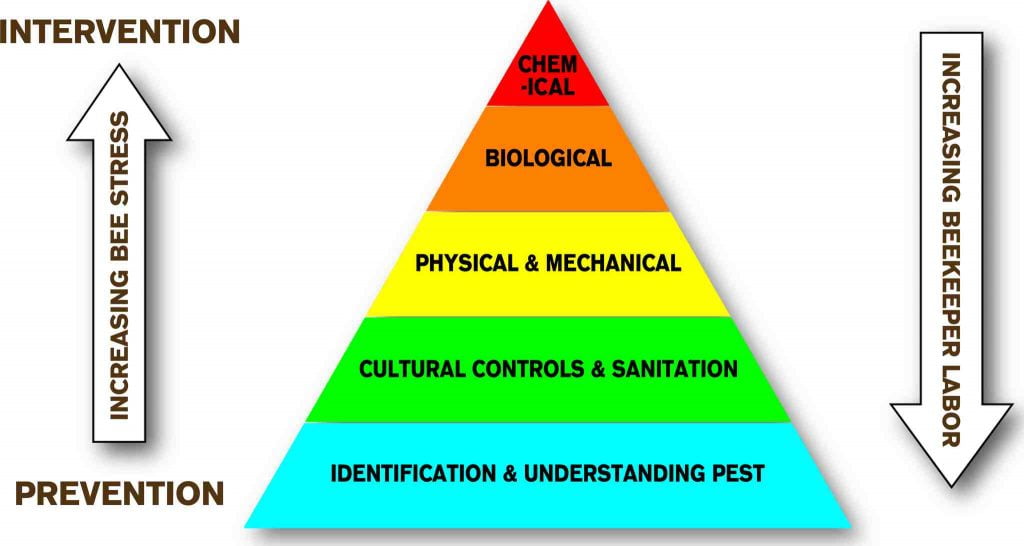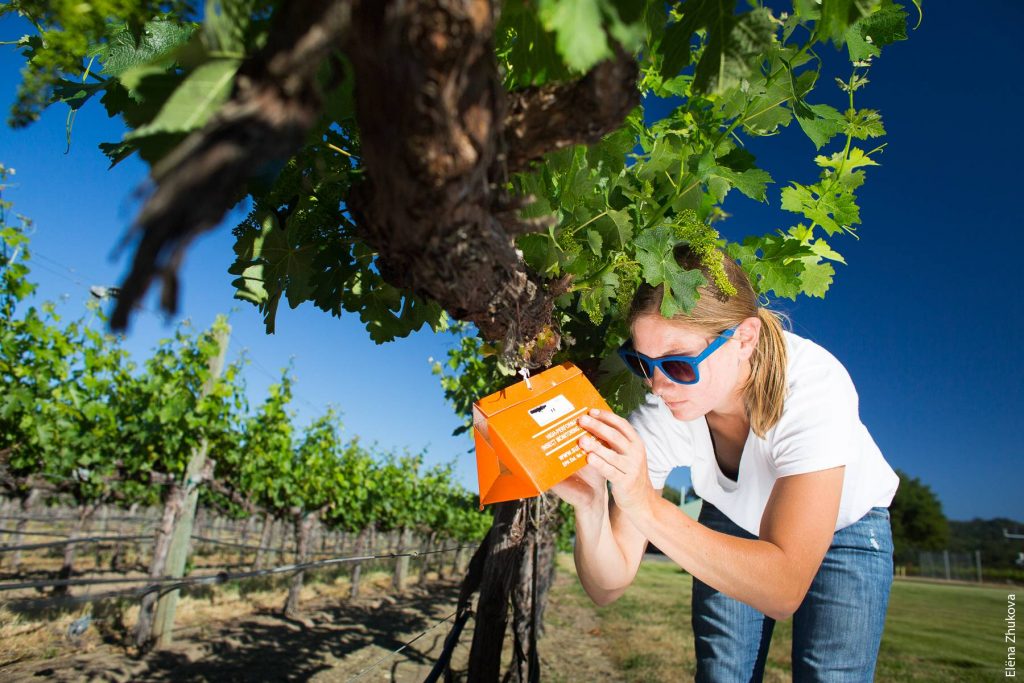Integrated pest management (IPM) is practiced differently depending on the type of pests and where they are located. In contrast with traditional pest control methods, IPM focuses mainly on pest prevention and uses pesticides only as needed. This makes integrated pest management a more effective, environmentally sensitive approach. How to Practice IPM? The basic processes in IPM are the same for all pests and locations. They are;
- IPM try to prevents pests from reaching an area or causing damage
- It scout for pests regularly and identify them correctly
- Use a variety of management tools to manage pests like biological, cultural, mechanical and chemical control
- Determine if pest populations have exceeded economic thresholds before choosing chemical control
Four strategies used in IPM

IPM is not a single pest control method but rather involves integrating multiple control methods. How to Practice IPM? A successful integrated pest management program uses a four-tiered implementation approach. They are identifying pests and monitor progress, set action thresholds, prevent pests from entering into crops, and evaluate the proper control method both for effectiveness and risk.
1. Identify pests and monitor progress
To determine the best preventative measures and reduce the unnecessary use of pesticides, we need to identify the pests correctly. A successful IPM program routinely monitors pest populations, areas vulnerable to pests, and the efficacy of prevention and control methods. Correct identification of pest infestation will also help to prevent damages that cause beneficial organisms.
2. Set action threshold
The action threshold for a pest infestation is the point where the presence of a pest becomes a threat or a nuisance. It is important is practice IPM. If the present level of the pest population is a problem for you, then that is the action threshold for pest infestation in your place. It varies according to the type of pests and place of infestation. Setting an action threshold is important to make a decision. Because the action threshold will give you an idea about the size, scope, and intensity of the IPM plan.

3. Prevent pests
The first and foremost thing to control pests is to prevent them from entering our area. The availability of food and shelter attracts pests. So, remove the conditions that attract pests like food, water, and shelter in order to prevent them from entering inside. To prevent pests from entering in you have to clean the dining and food storage areas, reduce clutter, remove trash and overgrown vegetation, and remove standing water. Try to install pest barriers on windows and doors and also educate all the people in your place about the need of preventing pests.
4. Control pests
If the action threshold exceeds, we need to implement any pest control methods. There are several home remedies and natural methods that we can try ourselves at home. And also chemicals are available in the market to kill pests. Even though using these give result, it is not a complete solution for your pest problem. Practice IPM programs use the most effective, lowest risk options by considering the environmental, surrounding, and other personal factors also. There are different types of pest control methods like pest trapping, heat/ cold treatment, physical removal of pests, and application of pesticides.
Why practice IPM (Integrated Pest Management)?

What are the common methods we use to control pests? Of course, it is using pesticides. We get results when using pesticides to control or kill pests. Then, why do we need to practice IPM? How to Practice IPM? Pesticides are not always effective when used as a singular control tactic. Every ecosystem is made up of living things and their non-living environment has a balance.
Using chemicals can harm other beneficial organisms also. This may affect the balance of the ecosystem and destroy certain species. Many IPM practices are used to prevent pests from entering our place. It promotes a healthy environment and protects human health from dangerous pests. Using IPM also conserves beneficial organisms like parasites and predators, and protects soil health.
The New Star Pest Control is one of the best pest control providers in the UAE. They provide their service across Dubai, Ajman, and Sharjah and now in Abu Dhabi. Applying an Integrated Pest Management program is not difficult and costly than managing pest infestation and its problems. So, never get late to hire a professional pest control company to solve your pest problem properly.


Pingback: Medical Problems and Infections from Pests - New Star Pest Control
Pingback: Post-Pandemic Pest Management: Pest Control During and After a Pandemic
Pingback: How Does Pest Control Work In Apartments? - NewStar Pest Control UAE
Pingback: How to control pests in agriculture - Newstar Pest Control UAE
Pingback: why do you need pest control for restaurants? New Star Pest Control UAE